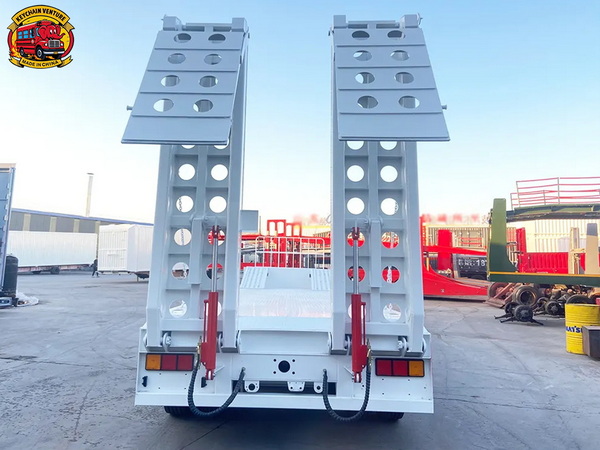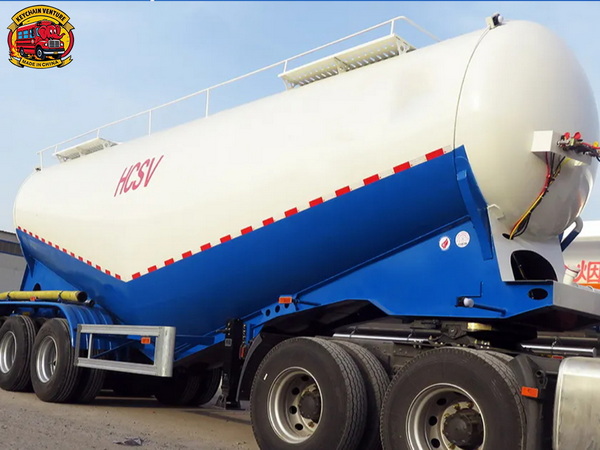Views: 222 Author: Amanda Publish Time: 2025-10-28 Origin: Site








Content Menu
● Introduction to Semi Trailers
>> KeyChain Venture Co., Ltd. and Market Leadership
● Standard Semi Trailer Length Explained
● Types of Semi Trailers and Their Typical Lengths
● Regulatory Standards and Global Harmonization
>> Implications for Importers and Exporters
● Customization and Specialized Semi Trailers
● Cargo Capacity and Operational Considerations
>> Weight Distribution and Axle Loads
● Trailer Length and Road Safety
● Environmental Impact of Trailer Length
● Technological Innovation in Semi Trailers
● Choosing the Right Trailer Length for Your Needs
● International Comparisons and Strategic Considerations
● Semi Trailers and the Future of Logistics
● Summary
● FAQ
>> 1. What is the standard length of a semi trailer in meters?
>> 2. Can semi trailer lengths vary for special applications?
>> 3. Why do different countries use different standard lengths?
>> 4. How does trailer length affect fuel efficiency?
>> 5. What innovations are available to support longer or heavier semi trailers?
Semi trailers form the backbone of modern freight transportation, representing a critical link in global supply chains that span across continents. Understanding semi trailer length in meters is not only essential for logistics professionals but is also increasingly important for businesses and planners operating internationally. This guide will explain what constitutes a semi trailer, detail common length standards (with a focus on meters), explore regulatory influences, and analyze the practical implications of size. Expanding further on the original article, this version provides additional context on semi trailer applications, innovation trends, maintenance factors, and environmental considerations, blending all insights into a cohesive reference for readers.

A semi trailer is a cargo-carrying unit that attaches to a tractor unit, forming a semi-trailer truck—a combination that is much more efficient than traditional rigid trucks. Semi trailers are favored worldwide due to their large cargo capacity and the flexibility of their detachable design, allowing fleet managers to optimize routes and loads according to demand.
KeyChain Venture Co., Ltd. stands at the forefront of China's commercial vehicle ecosystem. Serving domestic and international customers, this company is renowned for delivering high-performance semi trailers and heavy-duty solutions tailored to stringent global requirements. With a commitment to cutting-edge innovation, KeyChain Venture Co., Ltd. adapts designs to specific shipping needs and regulatory frameworks.
The most common length for semi trailers is 13.6 meters, a figure recognized by regulatory bodies in China, Europe, and much of the world as the standard for single-unit semi trailers. In markets such as the United States, a measurement of 14.63 meters (48 feet) is common, though the metric system is gradually gaining ground for cross-border harmonization.
The standard length affects nearly every aspect of logistics:
- Cargo space: A longer trailer often means more capacity, crucial for maximizing efficiency.
- Road compatibility: Length determines where trailers can operate safely—urban environments may restrict size, while highways accommodate longer units.
- International trading: Harmonized standards in meters foster smoother cross-border operations and compliance.
Semi trailers are engineered for diverse cargo types and operational settings. Lengths may vary, but most fall within regulatory boundaries:
- Dry van (box): Typically 13.6 meters, designed for general goods.
- Refrigerated (reefer): Often between 12 and 13.6 meters, optimized for food transport.
- Flatbed: Ranges from 12 to 13.6 meters, used for oversized or heavy equipment.
- Lowboy or drop deck: Around 12 meters, designed for construction machinery.
Specialized models are available for bulk goods, vehicles, or hazardous materials, each tailored for optimal safety and convenience within legal limits.
Major economies have adopted regulations that dictate trailer length for the sake of safety, infrastructure preservation, and streamlined logistics. In China and the European Union, 13.6 meters is nearly universal. North America still uses feet as the norm, but 14.63 meters is increasingly referenced in international operations.
Trailer length directly impacts the types and quantities of goods that can be shipped. Importers and exporters must ensure their vehicles comply with both origin and destination country rules to prevent penalties, delays, or rejected shipments.

While most trailers adhere to the 13.6-meter standard, KeyChain Venture Co., Ltd. and other premium suppliers offer custom designs:
- Shorter trailers (7–12 meters): Ideal for inner-city distribution, retail deliveries, and special-use scenarios.
- Longer trailers (up to 16.2 meters): Allowed in some regions for light, bulky cargo—such as textiles—but subject to specific permits and sometimes tandem configurations.
Clients with unique requirements can consult manufacturers for tailored solutions that balance performance with legal compliance.
Trailer length is a vital factor in optimizing cargo volume and weight distribution.
A typical 13.6-meter box trailer provides about 90–100 cubic meters of space, but internal layout, door type, and height will influence actual usable volume. Refrigerated trailers, for instance, may sacrifice some volume for insulation and cooling systems.
Long trailers must be carefully loaded to avoid exceeding axle weight limits, critical for road safety and infrastructure longevity. Manufacturers like KeyChain Venture Co., Ltd. consult with clients on best practices for maximizing usable volume while staying compliant.
Trailer length influences maneuverability, visibility, and stopping distance. Regulatory bodies set length limits not only for congestion control, but to reduce accident risk and ensure compatibility with local road infrastructure.
Longer trailers require greater care when turning and parking, especially in urban or industrial settings. Innovative designs such as rear-steer axles and advanced braking assist systems help mitigate these challenges.
Routine inspections are compulsory, checking not only length but also brakes, tires, lighting, and trailer integrity. Regular maintenance ensures both compliance and efficiency.
Efficiency is not just about cargo space. Efficient use of semi trailers also reduces fuel consumption per unit of cargo, resulting in fewer trips and lower emissions.
Maximizing cargo per journey means fewer runs, less time spent on the road, and ultimately reduced operating costs and environmental footprint. Modern aerodynamic semi trailers further enhance fuel performance through advanced design features.
The semi trailer industry continuously adopts innovation to increase performance and sustainability.
- Lightweight materials: Increased use of aluminum, composites, and high-strength steel lowers weight and improves load capacity.
- Telematics: Real-time location, condition monitoring, and compliance controls help managers optimize routes and maintenance.
- Safety systems: Automatic braking, stability control, and collision alerts are standard in newer models.
- Electrification: Hybrid and electric semi trailers are emerging to meet green transport demands.
These advancements are integral to KeyChain Venture Co., Ltd.'s product development and market positioning.
Picking a semi trailer is not merely about finding the longest available unit. Businesses and logistics professionals should consider:
- Cargo type and volume
- Legal restrictions along all routes
- Storage facility dimensions
- Maneuverability at destination
- Cost and fuel considerations
Consulting experienced suppliers ensures the selected trailer delivers measurable business value while ensuring regulatory compliance.
Globally, semi trailer length standards continue to converge around the 13.6-meter mark, although regional variations persist due to legacy systems and infrastructure differences.
For businesses operating cross-border, evaluating these variations is essential, from vehicle procurement to fleet deployment and shipment planning.
As e-commerce continues to grow and supply chains become more complex, standardized semi trailer length in meters offers clear advantages. The ongoing development toward more automated, environmentally responsible, and intelligent trailers signifies the next phase for global logistics.
KeyChain Venture Co., Ltd. continues to support these trends by offering versatile options, technological integration, and consultative expertise.
The typical semi trailer measures 13.6 meters in most markets, but local regulations, specific cargo needs, and industry innovation allow for significant customization. Trailer length impacts cargo volume, operational efficiency, route flexibility, safety measures, and environmental outcomes. By working with trusted suppliers such as KeyChain Venture Co., Ltd., businesses can find optimal solutions tailored to their logistical requirements—efficiently moving goods from origin to destination across borders and industries.

The standard length for a single-unit semi trailer is 13.6 meters in most international markets, providing optimal balance between cargo capacity and maneuverability.
Yes, manufacturers like KeyChain Venture Co., Ltd. can customize semi trailers for shorter urban or longer high-volume applications, subject to regulations and operational needs.
Variation in standard lengths arises from historic infrastructure designs, legal frameworks, and operational landscapes, although harmonization is moving toward the metric standard of 13.6 meters globally.
Longer trailers allow more cargo per trip, which can result in lower fuel consumption per unit transported, provided they are loaded and operated efficiently.
Modern semi trailers include advanced safety systems, lightweight materials, electronic monitoring, and, in some markets, hybrid or electric drive systems to support logistics, safety, and green transport goals.